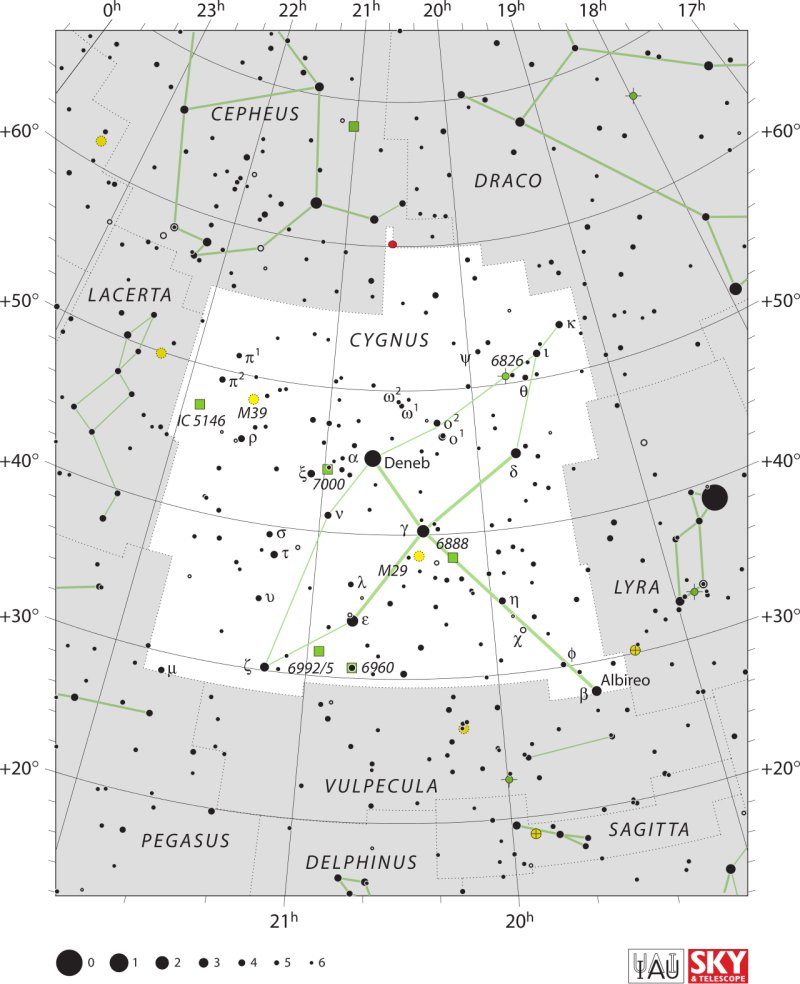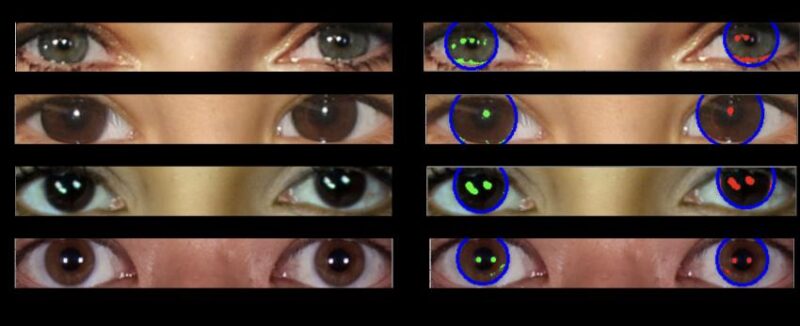
- NASA’s Webb space telescope has observed scorching hot storms on the binary pair of brown dwarfs called WISE 1049AB. They are the closest and brightest known brown dwarfs, only 6 light-years from Earth.
- Webb analyzed the light waves coming from WISE 1049AB, detecting hot swirling sand in the atmospheres amid temperatures of 1,740 degrees Fahrenheit (950 C).
- The results shed new light not only on how brown dwarfs form but also gas giant exoplanets.
Meet WISE 1049AB, a pair of hot, stormy brown dwarfs
Brown dwarfs are extreme worlds, falling somewhere between planets and stars. NASA’s James Webb Space Telescope (JWST) has revealed intense, scorching storms on a binary pair of brown dwarfs. The brown dwarfs are known collectively as WISE 1049AB. An international team of researchers said on July 15, 2024, Webb detected swirling clouds of hot sand on the two brown dwarfs. The new weather report by Webb is the most detailed to date for any bodies outside our solar system, revealing temperatures of about 1,740 degrees Fahrenheit (950 C).
The two brown dwarfs are the closest and brightest known to Earth at only 6 light-years away. This makes them well-suited for study by telescopes such as Webb.
The researchers published their peer-reviewed findings in the Monthly Notices of the Royal Astronomical Society on July 15, 2024.
A 3-D visualization of wild weather
So how did the researchers create the new weather report for WISE 1049AB? Webb measured the light waves coming from the surfaces of the two brown dwarfs. Just like with Earth, those light waves change as the part of each brown dwarf facing Earth becomes more and less cloudy.
Webb observed these weather changes over the course of one day for the brown dwarfs, about five to seven hours.
Analysis of the varying wavelengths of light showed the atmospheres of the brown dwarfs contain water, methane and carbon monoxide.
Webb is able to observe wavelengths of light that are normally blocked by Earth’s atmosphere. This makes it ideal to study objects such as brown dwarfs. As the paper stated:
WISE 1049AB is the pivotal first system to test the unique capabilities of JWST to probe the atmospheres of similar objects, as the wide-wavelength coverage of JWST opens wavelengths inaccessible from the ground or with any other telescope and enables tests of specific variability mechanisms.
The Webb observations are also unique because they captured the brown dwarfs as they rotated. Previous observations were mostly limited to taking “snapshots” of one side of a brown dwarf as it faced toward Earth. That is not as ideal, since brown dwarfs rotate relatively rapidly.

Brown dwarfs as a missing link
Since brown dwarfs are typically between planets and stars in terms of size and mass, scientists think they could be considered a missing link of sorts. Knowing more about how they form and evolve will help scientists better understand the evolution of both planets and stars as well.
There are still a lot of questions about brown dwarfs. Why are they different from both planets and stars? Why do some orbit stars, like planets, while others are solitary? And why do some orbit each other, as binary pairs?
Further studies
The new Webb observations provide valuable insight into not only WISE 1049AB, but other brown dwarfs as well, and even exoplanets. The paper said:
These observations demonstrate the transformational power of JWST to reveal the complex vertical structure of brown dwarf atmospheres. While WISE 1049AB are the two brightest brown dwarfs known, dozens of others are amenable to similar studies with JWST. JWST also enables similar studies of young, giant exoplanets, the lower surface gravity, and lower mass cousins of brown dwarfs. This is the first such study, but will not be the last. In the next few observing cycles, JWST will transform our understanding of both brown dwarf and young, giant exoplanet atmospheres.
WISE 1049AB is a great example of a brown dwarf pair. Another interesting study from last March showed that the older and less massive a brown dwarf is, however, the more likely it will end up solitary.
Bottom line: NASA’s Webb Space Telescope has created a new weather map of extreme storms on a binary pair of brown dwarfs only 6 light-years away.
Via The University of Edinburgh
Read more: Older brown dwarfs are more likely to be lonely
Read more: Tiny brown dwarf is smallest found so far
The post Scorching storms on brown dwarfs revealed by Webb first appeared on EarthSky.
from EarthSky https://ift.tt/w84r9g7

- NASA’s Webb space telescope has observed scorching hot storms on the binary pair of brown dwarfs called WISE 1049AB. They are the closest and brightest known brown dwarfs, only 6 light-years from Earth.
- Webb analyzed the light waves coming from WISE 1049AB, detecting hot swirling sand in the atmospheres amid temperatures of 1,740 degrees Fahrenheit (950 C).
- The results shed new light not only on how brown dwarfs form but also gas giant exoplanets.
Meet WISE 1049AB, a pair of hot, stormy brown dwarfs
Brown dwarfs are extreme worlds, falling somewhere between planets and stars. NASA’s James Webb Space Telescope (JWST) has revealed intense, scorching storms on a binary pair of brown dwarfs. The brown dwarfs are known collectively as WISE 1049AB. An international team of researchers said on July 15, 2024, Webb detected swirling clouds of hot sand on the two brown dwarfs. The new weather report by Webb is the most detailed to date for any bodies outside our solar system, revealing temperatures of about 1,740 degrees Fahrenheit (950 C).
The two brown dwarfs are the closest and brightest known to Earth at only 6 light-years away. This makes them well-suited for study by telescopes such as Webb.
The researchers published their peer-reviewed findings in the Monthly Notices of the Royal Astronomical Society on July 15, 2024.
A 3-D visualization of wild weather
So how did the researchers create the new weather report for WISE 1049AB? Webb measured the light waves coming from the surfaces of the two brown dwarfs. Just like with Earth, those light waves change as the part of each brown dwarf facing Earth becomes more and less cloudy.
Webb observed these weather changes over the course of one day for the brown dwarfs, about five to seven hours.
Analysis of the varying wavelengths of light showed the atmospheres of the brown dwarfs contain water, methane and carbon monoxide.
Webb is able to observe wavelengths of light that are normally blocked by Earth’s atmosphere. This makes it ideal to study objects such as brown dwarfs. As the paper stated:
WISE 1049AB is the pivotal first system to test the unique capabilities of JWST to probe the atmospheres of similar objects, as the wide-wavelength coverage of JWST opens wavelengths inaccessible from the ground or with any other telescope and enables tests of specific variability mechanisms.
The Webb observations are also unique because they captured the brown dwarfs as they rotated. Previous observations were mostly limited to taking “snapshots” of one side of a brown dwarf as it faced toward Earth. That is not as ideal, since brown dwarfs rotate relatively rapidly.

Brown dwarfs as a missing link
Since brown dwarfs are typically between planets and stars in terms of size and mass, scientists think they could be considered a missing link of sorts. Knowing more about how they form and evolve will help scientists better understand the evolution of both planets and stars as well.
There are still a lot of questions about brown dwarfs. Why are they different from both planets and stars? Why do some orbit stars, like planets, while others are solitary? And why do some orbit each other, as binary pairs?
Further studies
The new Webb observations provide valuable insight into not only WISE 1049AB, but other brown dwarfs as well, and even exoplanets. The paper said:
These observations demonstrate the transformational power of JWST to reveal the complex vertical structure of brown dwarf atmospheres. While WISE 1049AB are the two brightest brown dwarfs known, dozens of others are amenable to similar studies with JWST. JWST also enables similar studies of young, giant exoplanets, the lower surface gravity, and lower mass cousins of brown dwarfs. This is the first such study, but will not be the last. In the next few observing cycles, JWST will transform our understanding of both brown dwarf and young, giant exoplanet atmospheres.
WISE 1049AB is a great example of a brown dwarf pair. Another interesting study from last March showed that the older and less massive a brown dwarf is, however, the more likely it will end up solitary.
Bottom line: NASA’s Webb Space Telescope has created a new weather map of extreme storms on a binary pair of brown dwarfs only 6 light-years away.
Via The University of Edinburgh
Read more: Older brown dwarfs are more likely to be lonely
Read more: Tiny brown dwarf is smallest found so far
The post Scorching storms on brown dwarfs revealed by Webb first appeared on EarthSky.
from EarthSky https://ift.tt/w84r9g7























